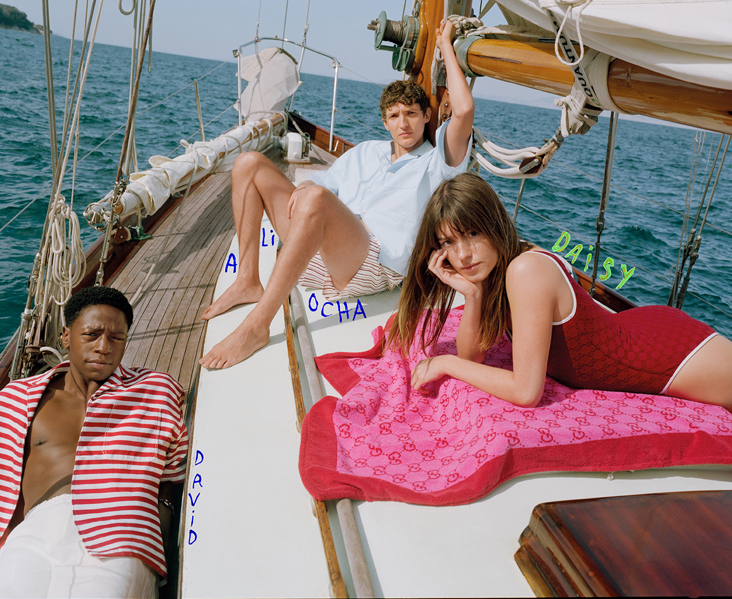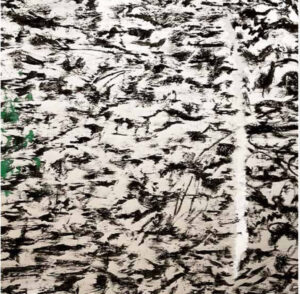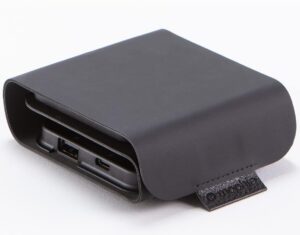Photographed by Jim Goldberg | Directed by Rubberband | Starring Daisy Edgar-Jones, Aliocha Schneider, and David Jonsson
In the Italian lexicon, the word lido conjures more than a beachfront. It suggests a feeling—a collective memory of open skies, parasols swaying in warm breeze, the sound of water echoing off the tiled walls of a seaside cabana. It is the hum of July afternoons that refuse to end. In Gucci’s new Lido campaign for Summer 2025, Creative Director Sabato De Sarno doesn’t just evoke this feeling—he crystallizes it into a visual language that is as languorous as it is lucid.
Shot through the tender, narrative lens of Jim Goldberg, whose documentary-style photography brings poetic imperfection to high fashion, the Lido campaign rejects slick seasonal tropes in favor of sun-faded intimacy. What emerges is not just an editorial vision, but an ambient state of mind—a reminder that summer, at its most profound, is less about scenery than about slowness. And in Gucci’s world, slowness becomes a kind of luxury.
A New Narrative for the Italian Summer
The campaign unfolds like a photo diary, skipping across loosely drawn coordinates: a garden villa hemmed with ivy, a crescent beach aglow with Mediterranean light, a windswept rooftop where the afternoon lingers. Daisy Edgar-Jones, Aliocha Schneider, and David Jonsson appear not as performers but as co-authors—lazing, leaning, wandering, caught in moments of near-stillness. Goldberg’s use of handwritten captions adds intimacy to the narrative: they’re confessions, musings, timestamps without precision. His images are not constructed tableaux—they are observed memories.
This tone marks a distinct evolution from Gucci’s previous seasonal aesthetics, which often veered toward the opulent, maximalist, or surreal. Instead, Gucci Lido is grounded in realism—not the literal, but the lyrical kind. It’s not about fantasy, but about pause—the golden hour before a dinner al fresco, the wet strands of hair after a dive, the laughter that feels like a wave you forgot to brace for.
The Campaign Video: Rhythm, Not Rhetoric
If Goldberg’s stills compose the soul of the campaign, the Rubberband-directed film gives it movement. Rather than traditional commercial pacing or high-octane editing, the video rolls at the speed of breath. Scenes loop and extend, set to an ambient soundscape that blends sea breeze with languid jazz, capturing not just sights but temperatures. Each frame feels soaked in salt air and citrus light, forming a synesthetic narrative that animates the garments without ever overpowering them.
There is no dialogue. No overt product focus. Instead, the video feels like an elegy for summers we didn’t photograph, a cinematic articulation of what it feels like to exist when time softens and expectations dissolve. It’s not just fashion in motion—it’s fashion as memory.
Textures of Ease: Gucci’s Garments in Focus
At the core of the Lido campaign is an exercise in sensual textures and seasonality. De Sarno leans into fabrics that breathe and move—light cottons, sunwashed denims, airy silks, and wicker-woven accessories that seem as if they could float off the frame. The design language here is one of elegant evaporation. There’s nothing heavy. Everything touches the skin with purpose.
The Flora print, a longtime Gucci signature, returns here with a faded botanical clarity—less a pop of color, more a whisper from a garden memory. In dresses and light shirts, it speaks to a harmony between naturalism and nostalgia. GG Monogram denim, reimagined in looser silhouettes and open-front jackets, is styled to suggest openness rather than status. Even the Interlocking G jewellery—normally high-polish—is given a matte patina that reads more coastal heirloom than red carpet.
And then there are the shoes. The new suede Gigi loafers, a highlight of the campaign, strike the perfect balance between tailored elegance and barefoot abandon. Paired with raffia bags and cropped trousers, they appear not as accessories but as anchors—grounding the wearer even as they meander through summer’s haze.
Accessories that Speak in Color
Where many campaigns use accessories as punctuation, Gucci Lido allows them to form their own sentence structure. The Gucci Softbit, GG Marmont, and Bamboo 1947 handbags are rendered here not in leather’s usual sheen but in raffia, wicker, and soft crochet, giving each piece a new tactility. These are bags that whisper rather than shout, slung loosely over shoulders, resting on knees during idle moments. They are part of the rhythm of the day, not interruptions to it.
Perhaps most captivating is the ocean-hued palette that recurs throughout the accessories line—seafoam, cobalt, aquamarine, and sandy beige. This spectrum bleeds into the Gucci Re-Web sneakers, which pair sporty minimalism with artisanal finishes. Worn with bare ankles and oversized linen shorts, the Re-Web becomes less a sneaker and more a passport to spontaneity.
Eyewear and jewelry complete the visual symphony. Gucci Eyewear for this season leans into oversized acetate frames and tinted lenses that look plucked from a 1960s film reel. Their languid shape reflects the entire campaign’s ethos: view the world gently, through color, through haze. Interlocking G necklaces, meanwhile, hang low and unforced—artifacts of mood rather than markers of wealth.
A Campaign That Breathes
What makes Gucci Lido so resonant isn’t just its craftsmanship—it’s the refusal to sell a lifestyle through perfection. This campaign breathes. It allows for imperfection: hair out of place, shirts rumpled, bodies at rest. In doing so, it liberates luxury from effort and instead embraces ease. The clothing doesn’t demand attention. It invites touch. The accessories don’t impose status. They evoke companionship.
Goldberg’s visual sensibility helps anchor this vision. His background in documentary photography lends a sense of trust to every frame. There is no posturing. No over-polished sheen. Just fragments of feeling, held together by light and linen.
And through all of this flows the unmistakable Italian pulse—sunbaked walls, lapping waves, espresso spoons clinking in outdoor cafés. Gucci has not only returned to its roots with this campaign—it has found a new way of looking at home, at leisure, and at summer itself. Not as something to perform, but as something to inhabit.
The Philosophy of Lido: More Than a Collection
At its heart, the Gucci Lido campaign is not merely about clothes. It is about the emotional architecture of summer—how moments are built not from grandeur, but from the pause between movements. It is about the way fabric falls when you stop walking, the hush that follows a laugh, the echo of saltwater on dry skin.
This is what sets Gucci apart in 2025. In an age of AI-generated aesthetics, ultra-curated influencer content, and algorithmic marketing, Gucci Lido rejects performance in favor of presence. It invites the viewer not to envy, but to remember. Not to consume, but to feel.
In this way, the Lido campaign becomes a quiet act of rebellion. Against noise. Against acceleration. Against the hyper-edited sheen of modern visual culture. It suggests a future where fashion slows down. Where garments hold memory. Where the essence of style isn’t dictated—but discovered, moment by moment, in the way light touches fabric or laughter falls on an empty afternoon.
New Season of Stillness
As fashion increasingly chases speed, virality, and virtuality, Gucci’s Lido campaign offers a vital counterpoint. It reminds us that luxury, at its most meaningful, is not about accumulation—but about atmosphere. It is the choice to dwell. To soften. To remember the summer as it once was—full of warmth, spontaneity, and texture—and to carry that memory forward, not as nostalgia, but as intention.
Gucci Lido doesn’t reinvent summer. It distills it. And in doing so, it offers a blueprint for how fashion can once again become an act of living well—not loudly, but lovingly.
No comments yet.









